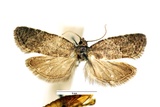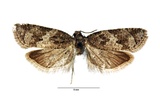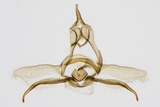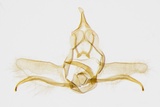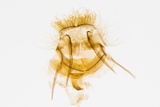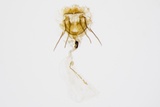Cnephasia genitalana Pierce & Metcalfe, 1922 Species
Last modified: Nov. 9, 2023, 12:13 p.m.
The status of this species, which is currently very rare is based only on individuals that have been checked for genitalia.
More than likely the species is much more common than we think.
Details
- Classification
- Family: Tortricidae > Subfamily: Tortricinae > Tribus: Cnephasiini > Genus: Cnephasia > Subgenus: Cnephasia > Species: Cnephasia genitalana
- Vernacular names
- Vale spikkelbladroller (NL), Dover Shade (EN)
- First mention in Belgium
- Janmoulle E. 1956. Espèces nouvelles pour la faune belge (suite). — Lambillionea 56: 1, 58, 81. On page 81.
- Status
-
Native
Distribution
Imago
Wingspan 15–22 mm. Whitish ground colour with dark grey-brown markings which are often obsolescent. When discernable the subbasal fascia is narrow with a sharp angle at its middle. As with other Cnephasia spp. requires genital dissection for confident identification.
Bionomics
The larva lives between spun leaves. The adults come to light.
Flight periods
The adults fly from mid-June towards mid-August.
Observed on
- Host plant (genera):
- Senecio, Mentha, Ononis, Leucanthemum, Centaurea, Anthyllis and Ranunculus
The caterpillar appears to be quite polyphagous, but prefers to live on Asteraceae flowers like Hieracium sp. and Leucanthemum vulgare. Other known food plants are Senecio, Ranunculus, Medicago, Trifolium, Mentha, Coronilla, Digitalis, Centaurea, Teucrium, etc.
Habitat
It prefers chalk downland, open forests and rough grassland.
